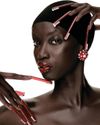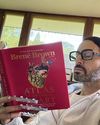
What happens when journalists become the story? That's the question Vogue posed to reporters Megan Twohey, 46, and Jodi Kantor, 47, whose 2019 book She Said has become a new film, directed by Maria Schrader and starring Carey Mulligan and Zoe Kazan. Twohey’s and Kantor’s personal lives are on display, alongside the bravery of the victims who talked to them about Harvey Weinstein’s sexual predation. Here, Twohey and Kantor take us behind the scenes of their Pulitzer Prize-winning investigation, and its journey to the screen.
The first clue that our investigation into Harvey Weinstein might one day turn into a film came, oddly enough, from the producer himself.
It was back in October 2017, the day before we published our investigation into his treatment of women, and Variety had somehow gotten word of what we were up to. The piece revealed that our story was in the works and quoted Weinstein pretending not to know a thing about it. He quipped, The story sounds so good, I want to buy the movie rights.”
At the time, the idea of a movie sounded preposterous. We were rewriting drafts, coaxing reluctant sources, and struggling to force Weinstein to respond to allegations. We were also exhausted, subsisting on takeout and the chocolate almonds our editor stashed in her desk, and could barely see beyond the strict obligations to facts. One night, as we shared a cab back to Brooklyn, we wondered aloud: Would anyone even care about what we were doing?
Bu hikaye Vogue US dergisinin November 2022 sayısından alınmıştır.
Start your 7-day Magzter GOLD free trial to access thousands of curated premium stories, and 9,000+ magazines and newspapers.
Already a subscriber ? Giriş Yap
Bu hikaye Vogue US dergisinin November 2022 sayısından alınmıştır.
Start your 7-day Magzter GOLD free trial to access thousands of curated premium stories, and 9,000+ magazines and newspapers.
Already a subscriber? Giriş Yap

FINAL CUT
\"WE WANT YOU TO GO FOR IT!\" ANNA TOLD ME

SCREEN TIME
Three films we can't wait to see.

Impossible Beauty
Sometimes, more is more: Surreal lashes and extreme nails put the fierce back in play

Blossoms Dearie
Dynamic, whimsical florals and the humble backdrops of upstate New York make for a charming study in contrasts.

HOME
Six years ago, Marc Jacobs got a call about a house designed by Frank Lloyd Wright. Making it his own, he writes, would be about love, commitment, anxiety, patience, struggle, and, finally, a kind of hard-fought, hard-won peace.

GIRL, INTERRUPTED
Anna Weyant found extraordinary fame as an artist before she had reached her mid-20s. Then came another kind of attention. Dodie Kazanjian meets the painter at the start of a fresh chapter

ROLE PLAY
Kaia Gerber is someone who likes to listen, learn, read books, go to the theater, ask questions, have difficult conversations, act, perform, transform, and stretch herself in everything she does. That she's an object of beauty is almost beside the point.

CALLAS SHEET
Maria Callas's singular voice made her a legend on the stage. In a new film starring Angelina Jolieand on the runwaysthe romance continues.

BOOK IT
A preview of the best fiction coming

GLOBAL VISTAS
Three new exhibitions offer an expansive view.